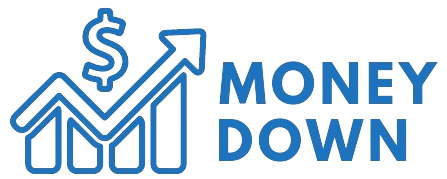What is the present outlook for investors in today’s credit market?
Interest rates have been declining secularly because the Nineteen Eighties. Following the worldwide financial crisis (GFC), rates of interest hovered near zero as central banks implemented quantitative easing (QE) and flooded markets with liquidity. Among other effects, this monetary policy increased the valuations of most assets, including private and public debt.
This trend resulted in 2022 when central banks began raising rates of interest and tightening credit conditions to curb inflation. Today, investors must navigate this transition. In economic terms – and to take a page from Thomas Piketty – we’ve moved from an r > g to an i > g world, from a world through which the true rate of return exceeds the speed of economic growth to a world with nominal rates of interest outpace economic growth.
That has significant impact for borrowers whose income is predicted to grow more slowly than the interest accrued on the borrowed funds. As our parents might say, this may probably “end in tears.”
Simply put, many firms and investments haven’t been put to the test. Since 2009, aside from a temporary period in early 2020, nominal growth has exceeded nominal rates of interest. Warren Buffett famously said that“You don’t find out who’s swimming naked until the tide goes out.” Well, the tide is coming to an end, and as firms refinance at higher rates of interest, default rates and distressed stock markets are prone to rise at the identical time.
When sales grow slower than financing costs, especially over an extended time frame, firms feel the pinch. Add to that the big amounts of U.S. fixed-rate corporate bonds maturing in the subsequent few years, and banks and other traditional lenders getting cold feet, amongst other issues, and plenty of firms will remain vulnerable. Some roll over their debt early, even at higher rates of interest, to avoid potentially not with the ability to achieve this later. The cost for top interest borrowers is around 9%. For investors, the main target of risk has shifted from rising capital costs to refinancing.
The total variety of corporate bankruptcies within the U.S. year-to-date is at its highest level since 2010. The rate of defaults is predicted to proceed, if not increase, in 2023 and 2024 as higher rates of interest, slower economic growth and lagging inflation have effects. This isn’t “business as usual”.
Investors’ willingness to take risks has also modified. While they could have felt compelled to enterprise further up the danger continuum to realize returns, with the rise within the risk-free rate, there may be less need for investors to achieve this. The turmoil within the U.S. regional banking sector, with the collapse of Silicon Valley Bank and Signature Bank in March and the failure of First Republic in May, has thrown lending into disarray. A Current report The impact on US economic activity showed a slowdown in job growth and a short-term deterioration within the business outlook.
Where is the asset allocation between private and non-private loans? Rising rates of interest have pushed bond prices down. Despite the continued love of personal debt, there may be an missed and growing opportunity proposition in government bond markets that appears to be mispriced relative to risk and return. In 2020 and 2021, private and non-private debt were valued at par (or higher), with private debt offering a liquidity premium in the shape of a fat coupon. Today the situation is different because the lead goes to the general public markets. There are mutliple reasons for this.
On the sovereign debt market:
- Prices are set on the open market and adjusted to changing market conditions.
- There is bigger price transparency. This results in more price volatility and more opportunities to buy assets below par to extend the margin of safety.
- Higher liquidity makes it easier to exit a position when the risk-reward ratio changes or when prospects for capital deployment grow to be higher.
- Companies that issue public bonds have proven their business models available on the market.
- There is bigger diversification of bonds in the general public markets.
- In the context of rising rates of interest, national debt has corrected more sharply than private debt.
In any economic cycle, some firms with solid growth profiles will still have debt. For example, the energy sector was heavily impacted from 2015 onwards, while other sectors – for instance the hospitality industry – weren’t affected. In 2020, at the peak of the Corona crisis, hotels, cinemas and automotive rental firms were struggling, but bakeries were doing well. At some point, prices in stressed sectors fell enough that investors were compensated for the danger. Selective investors could find firms with high-quality assets and robust competitive benefits. The occasional price volatility in publicly traded bonds provides a possibility to use mispricing.
In the 4 previous default cycles, the common takedown of lower-rated high-yield bonds was about 30% and the common recovery in the next two years was about 80%. With the high-yield bond market down about 18% in 2022, investors are beginning to see good opportunities emerging in lower quality credit as an eventual recovery occurs.
Investors trying to diversify their portfolios and profit from the valuation gap between private and non-private bonds should consider allocating to public bonds. Numerous small and medium-sized firms offer a pretty risk-reward ratio. Because of their size, these firms face greater capital constraints and investors face less competition from other capital providers. Additionally, as credit conditions remain tight and refinancing costs rise, more quality firms might want to raise capital.
If you enjoyed this post, do not forget to subscribe.
Photo credit: ©Getty Images / Tatomm



